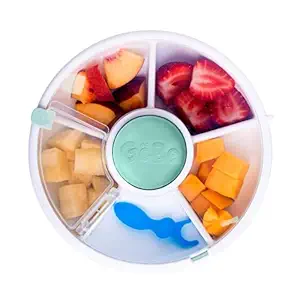The Ultimate Guide to Buying Snack Containers: Types, Features, Prices, and Tips
Overview
Snack containers are a must-have for anyone who wants to keep their food fresh and easily accessible on-the-go. Whether you're packing a lunch for work, sending snacks with your kids to school, or simply looking for a way to store your favorite treats, there are plenty of options available.
In this guide, we'll explore the different types of snack containers, key considerations to keep in mind when shopping, important features to look for, and pricing information. We'll also provide some tips to help you make the most of your snack containers and answer some frequently asked questions.
Types
1. Plastic Containers: These are the most common type of snack container and come in a variety of shapes and sizes. They are lightweight, durable, and usually affordable. However, they can stain and retain odors over time.
2. Glass Containers: These are a great alternative to plastic containers as they are non-toxic and don't retain odors or stains. They are also microwave and dishwasher safe. However, they are heavier and more fragile than plastic containers.
3. Stainless Steel Containers: These are durable and non-toxic, making them a great option for those who want to avoid plastic. They are also dishwasher safe. However, they can be more expensive than plastic or glass containers.
4. Snack Bags: These are reusable bags made of fabric or silicone that are lightweight and easy to clean. They are great for snacks like chips, crackers, and fruit. However, they are not ideal for liquids or messy foods.
5. Ziplock Bags: These are disposable bags that are affordable and easy to find. They are great for packing sandwiches, vegetables, and other foods. However, they are not environmentally friendly and can only be used once.
Key Considerations
1. Size: Consider the size of the snack container you need based on the amount of food you plan to pack.
2. Portability: Look for containers that are easy to carry and fit in your bag or lunchbox.
3. Leak-proof: Choose containers that are leak-proof to prevent spills and messes.
4. Microwave and Dishwasher Safe: If you plan to heat up your food or want an easy way to clean your containers, look for ones that are microwave and dishwasher safe.
Features
1. Airtight Seal: This helps keep your food fresh and prevents spills.
2. Stackable: This feature saves space in your bag or fridge.
3. Dividers: These are great for separating different snacks or foods.
4. Insulation: This helps keep your food at the right temperature.
Prices
Snack containers can range in price from a few dollars to over $50, depending on the type and brand. Plastic containers are usually the most affordable, while glass and stainless steel containers can be more expensive.
Tips
1. Pack snacks that are easy to eat on-the-go, like cut-up fruit, nuts, and crackers.
2. Use dividers to separate different snacks and prevent them from getting mixed up.
3. Choose containers that fit your lifestyle and needs, whether you need something lightweight or durable.
FAQs
Q: Are snack containers safe for kids?
A: Yes, snack containers are safe for kids as long as they are made of non-toxic materials and are age-appropriate.
Q: Can I put hot food in a snack container?
A: It depends on the type of container. Glass and stainless steel containers are usually safe for hot foods, while plastic containers may warp or melt.
Q: How do I clean my snack containers?
A: Most snack containers are dishwasher safe, but you can also wash them by hand with soap and water.
Q: Can I use snack bags for liquids?
A: No, snack bags are not ideal for liquids as they may leak. Use a leak-proof container for liquids.
Conclusion:
Snack containers are a convenient and eco-friendly way to pack and store your favorite snacks. With the right type, size, and features, you can keep your food fresh and easily accessible on-the-go. Use this guide to help you find the best snack containers for your needs and make the most of your snacking experience.














